My Nomad Guide To Slovenia
I went, I ate, I explored. This is your intro to the picturesque country of Slovenia and how to navigate it as a nomad.

I went, I ate, I explored. This is your intro to the picturesque country of Slovenia and how to navigate it as a nomad.


A message from your authors
Hey traveler. If you’re planning on coming to Slovenia, then you are going to forget about visiting the rest of the world because this place will take you completely. Me and Mile come here at least once per year and there’s always something new to do, in a country so small. Although we’re the old guns, we’re young in spirit and we do can Midjourney for our profile pics! We’re happily married to our wives btw.
We decided to write this guide because we saw that a-lot of digital nomads need information in one place about what where how and when in Slovenia. To be honest, it was just me writing it, Misho was trying to be at one with nature.
You could find similar guides on sites like BBC, National Geographic and the likes, but we don’t do it for the views, we do it for you (and a few beers here and there!).
So, enjoy and read on.
Misho & Mile.
🌶️ About Slovenia 🌶️
🌶️ Connectivity And Workspaces 🌶️
🌶️ Co-working Spaces in Major Slovenian Cities 🌶️
🌶️ Cafes and public spaces with Wi-Fi access in Slovenia 🌶️
🌶️ Accommodation Options in Slovenia 🌶️
🌶️ Cost Of Living In Slovenia 🌶️
🌶️ Language and Communication in Slovenia 🌶️
🌶️ Natural Wonders and Outdoor Activities in Slovenia 🌶️
🌶️ The Best Things To Do In Slovenia 🌶️
🌶️ Cultural and Historical Attractions in Slovenia 🌶️
🌶️ Cities Worth Visiting in Slovenia 🌶️
🌶️ UNESCO World Heritage sites in Slovenia 🌶️
🌶️ Food and Culinary Scene in Slovenia 🌶️
🌶️ Networking and Socializing in Slovenia 🌶️
🌶️ Safety and Healthcare in Slovenia 🌶️
🌶️ Visa and Residency Requirements in Slovenia 🌶️
🌶️ Logistics 🌶️
🌶️ Slovenia Itineraries 🌶️
🌶️ Recap of Slovenia’s appeal for digital nomads and travelers 🌶️



With its breathtaking landscapes ranging from the snow-capped Julian Alps to the sun-kissed Adriatic coastline, Slovenia is an undiscovered paradise for digital nomads and travelers seeking a fresh European experience.
In recent years, the country has seen a rise in popularity among remote workers and digital nomads, thanks to its affordable cost of living, excellent infrastructure, and widespread internet connectivity. As a member of the European Union and Schengen Area, Slovenia is also an accessible and convenient base for exploring the rest of Europe.
Join Misho and Mile as they share their insider knowledge and firsthand experiences of Slovenia, highlighting the many opportunities and advantages this hidden gem offers to digital nomads and travelers alike. From the buzzing city life of Ljubljana to the serene beauty of Lake Bled, discover the many facets of Slovenia that make it an irresistible destination for work and leisure.
This compact country offers stunning natural wonders, such as the enchanting Lake Bled, the serene Lake Bohinj, and the mesmerizing Škocjan and Postojna caves.
Its charming capital, Ljubljana, melds historical charm with modern amenities, while other towns like Maribor, Ptuj, and Piran reveal Slovenia’s rich past and vibrant culture. Slovenia’s central location provides easy access to neighbouring countries, making it an excellent base for exploring this part of Europe.
With a lower cost of living than many Western European destinations, Slovenia is an affordable yet high-quality travel experience. Visitors can indulge in the delicious fusion of Mediterranean, Alpine, and Central European cuisine while enjoying a safe and welcoming environment.
Embracing sustainable tourism, Slovenia offers eco-friendly accommodations and activities, allowing travelers to enjoy its beauty with minimal environmental impact.
Slovenia is located in Central Europe, nestled between several nations. To its north, Slovenia shares a border with Austria, while to its east lies Hungary. Italy borders the country to the west, and Croatia stretches along its southern boundary. Slovenia has a strategic location in the heart of Europe, allowing it to serve as a crossroads for various cultures, traditions, and trade routes.
Covering an area of 20,273 square kilometers, Slovenia is known for its diverse landscapes, which include the majestic Julian Alps, the picturesque Adriatic coastline, and vast expanses of lush forests.
Despite its small size, Slovenia is a proud member of the European Union, the Schengen Area, and the Eurozone, making it well-connected and easily accessible for travelers. Its natural beauty, rich cultural scene, and warm hospitality make Slovenia an attractive destination for visitors from all over the world.
Slovenia boasts excellent connectivity and a growing number of workspaces, making it an attractive destination for digital nomads and remote workers.
As a member of the European Union and the Schengen Area, the country enjoys strong infrastructure and transportation links, which facilitate easy travel within the region.
The capital, Ljubljana, and other major cities like Maribor, Kranj, and Celje are well-connected by highways, railways, and public transportation networks.
The country’s high-speed internet coverage is extensive, with 4G and 5G networks available in urban areas and steady improvement in rural locations. Wi-Fi is widely accessible in public spaces, cafes, and accommodations, ensuring constant connectivity for work and leisure.
Slovenia has seen steady growth in co-working spaces and shared offices, particularly in Ljubljana.
These workspaces cater to the needs of freelancers, entrepreneurs, and remote workers, offering modern facilities, flexible plans, and opportunities for networking and collaboration. The friendly, supportive environment in these workspaces enhances productivity and fosters a sense of community among professionals.
Slovenia has a well-developed internet infrastructure, ensuring widespread Wi-Fi availability and competitive internet speeds across the country.
Wi-Fi is commonly found in various public spaces, including cafes, restaurants, hotels, shopping centers, and public transportation hubs. Many establishments offer free Wi-Fi access to their customers, making it convenient for tourists and remote workers to stay connected.
Regarding internet speeds, Slovenia ranks quite well compared to other European countries. As of 2021, the average fixed broadband speed in Slovenia was around 74 Mbps for downloads and 23 Mbps for uploads.
However, it is important to note that these numbers may have improved since then, as the country continues to invest in its digital infrastructure.
Mobile internet coverage is also widespread, with 4G networks covering most of the population and 5G services being rolled out in urban areas. This enables users to enjoy high-speed mobile data services, facilitating seamless online experiences even when on the move.
In summary, Slovenia offers reliable internet connectivity and competitive speeds, making it a suitable destination for digital nomads, remote workers, and tourists seeking seamless.
Slovenia offers a variety of co-working spaces in its major cities, catering to the needs of digital nomads, entrepreneurs, and remote workers. These spaces provide a professional environment, modern amenities, and opportunities for networking and collaboration. Here are some popular co-working spaces in the main cities:

Small, quiet and perfect for individuals as well as big teams.

This co-working space in the capital's vicinity offers an innovative environment, with facilities for entrepreneurs, startups, and remote workers.

Located in Maribor's city center, Top Office provides flexible workspaces, a supportive community, and a variety of events and workshops.

This business incubator and co-working space offers a range of services, including a kitchenette, zoom room, and their cool drip coffee maker.

IIt's one of the cooler places to work from when staying in Kranj. Kovacnica has everything a regular co-working offers.

This youth center provides co-working spaces, meeting rooms, and event spaces to support local entrepreneurs and remote workers.
Slovenia offers numerous cafes and public spaces with Wi-Fi access, allowing visitors and locals to enjoy internet connectivity while indulging in leisure or work activities. Many of these establishments provide free Wi-Fi to their customers. Here are some popular spots with Wi-Fi access in major Slovenian cities:
Public spaces like libraries, shopping centers, and some parks also provide Wi-Fi access in Slovenia. For instance, Ljubljana’s Kongresni trg park, Citypark shopping center, and the National and University Library all offer Wi-Fi for visitors. Always inquire about Wi-Fi availability in public spaces or check for signs indicating the presence of a network.
Slovenia offers a diverse range of accommodation options to suit different budgets and preferences, catering to travelers, tourists, and remote workers. Options include:
These accommodation options ensure a comfortable and memorable stay for visitors to Slovenia, regardless of their budget or travel preferences.
Centrally located, this unique hostel is set in a former bank and offers a mix of dorms and private rooms.
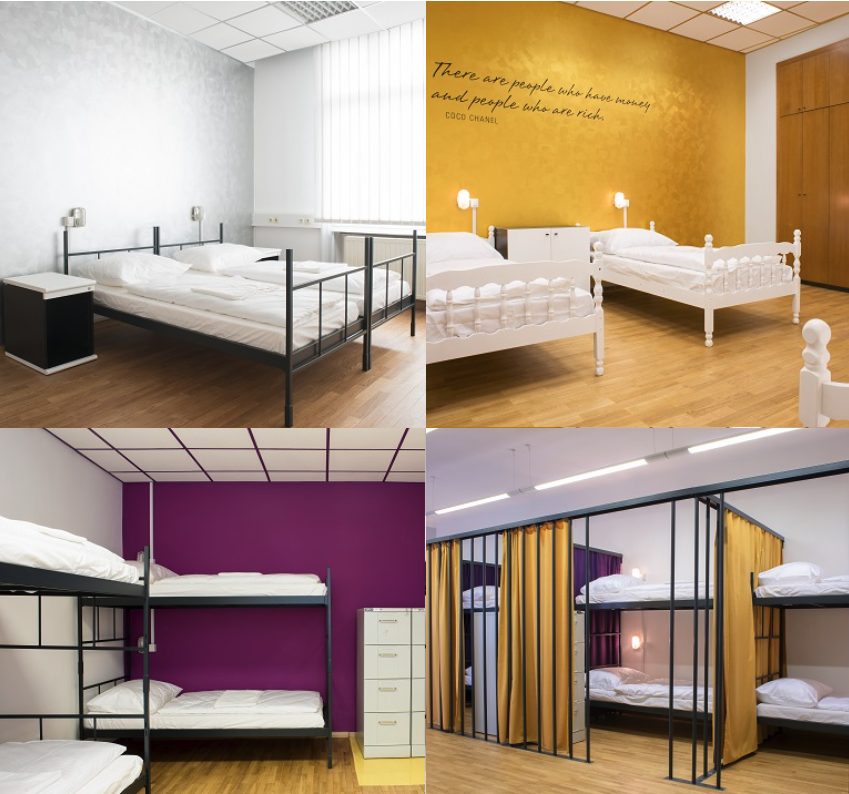
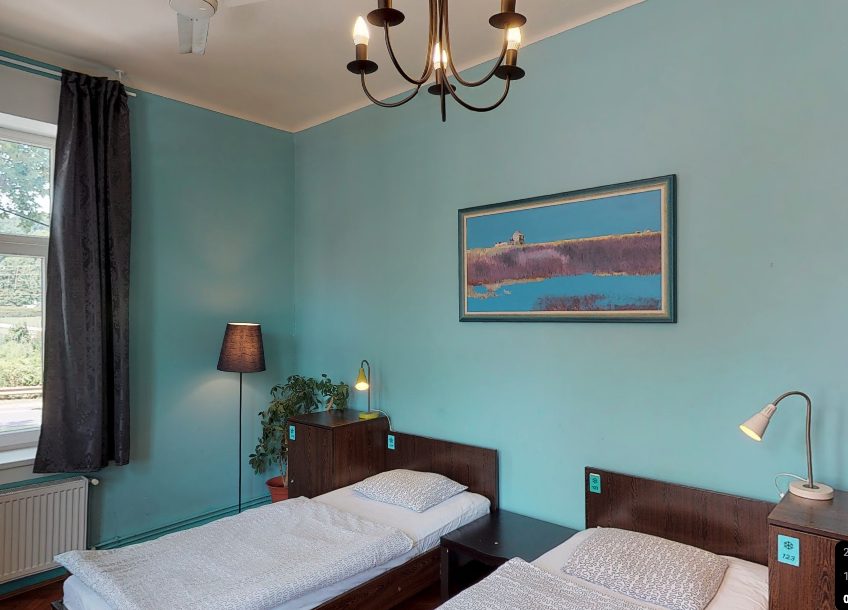
A charming hostel in a quiet neighborhood, close to the city center, offering dorms, private rooms, and a communal kitchen.
A former military prison transformed into an artsy hostel, featuring uniquely designed cells and dorm rooms. It’s ok to drop the soap here.

Located near the city center, this hostel offers budget-friendly accommodations with a mix of dorms and private rooms.


Set in a former military bakery, this hostel features dorms, private rooms, and a range of facilities, including a shared kitchen.
Located near Lake Bled, this hostel offers dorms, private rooms, and a communal kitchen with stunning views.


A budget-friendly guesthouse with private rooms, close to the lake and local attractions.
A budget-friendly option offering dorms, private rooms, and a shared kitchen, located near the city center.


A cozy hostel in the heart of Piran, offering dorms, private rooms, and a shared kitchen.

A 5-star hotel in the city center, offering upscale rooms, a rooftop restaurant, and a wellness center.
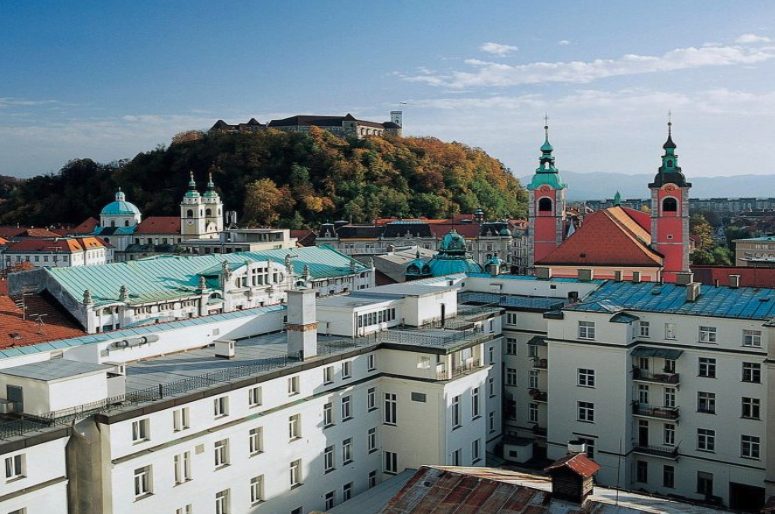
A historic hotel featuring elegant rooms, a spa, and an indoor pool, situated in the heart of Ljubljana.

A boutique hotel with modern rooms, located near the Old Town and major attractions.
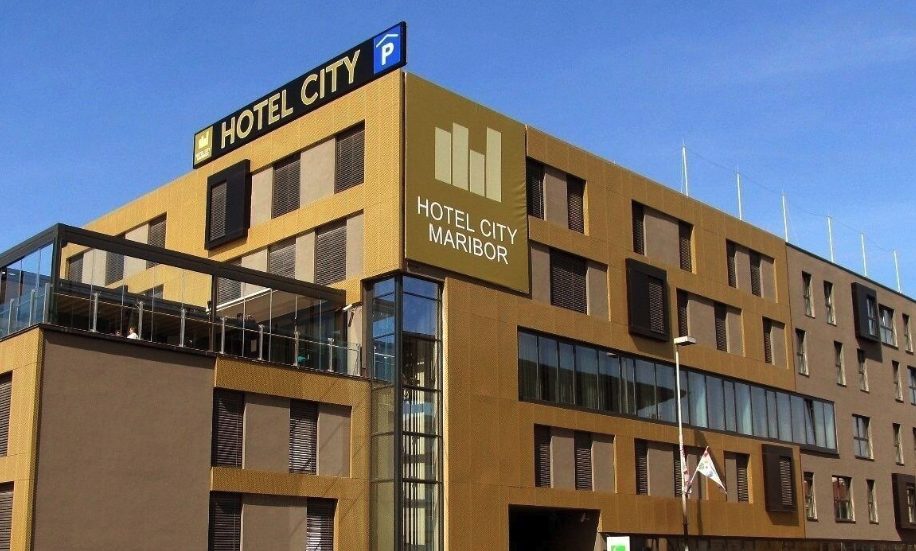
A 4-star hotel on the Drava River, offering stylish rooms, a restaurant, and a fitness center.

A luxurious hotel with spa facilities, indoor and outdoor pools, and gourmet dining options, located near the Pohorje ski slopes.

A former presidential residence turned luxury hotel, offering a private park, a lakeside terrace, and refined accommodations.

A historic 5-star hotel on the shores of Lake Bled, featuring elegant rooms, a private beach, and a wellness center.

A 5-star hotel boasting luxurious rooms, fine dining, and a comprehensive spa, situated near the Adriatic coast.

A modern 5-star hotel offering sea-view rooms, a private beach, and an extensive wellness center.

A 4-star hotel at the foot of the Julian Alps, featuring comfortable rooms, a spa, and a casino.

A historic 4-star hotel offering elegantly furnished rooms, thermal pools, and a wellness center.
The cost of living in Slovenia is relatively moderate compared to Western European countries but slightly higher than some Eastern European nations.
Costs vary depending on location, with the capital, Ljubljana, being more expensive than smaller cities or rural areas.
Rent for a one-bedroom apartment in Ljubljana ranges from €500 to €800 per month, while in other cities, it may be between €300 and €500.
Basic monthly utilities for an 85m2 apartment cost around €150 to €200. A one-way public transport ticket costs around €1.30, and a monthly pass is around €40. Gasoline prices hover around €1.30 per liter.
Eating out at a mid-range restaurant costs around €10 to €20 per person, and a cappuccino is around €1.80 to €2.50. Groceries are affordable, with a loaf of bread at around €1 and a liter of milk costing approximately €1. Monthly gym memberships average €30 to €50. Overall, Slovenia offers a comfortable and affordable lifestyle.
When comparing Slovenia to other European destinations in terms of cost of living, natural beauty, cultural richness, and connectivity, it stands out as an attractive option for travelers, expats, and digital nomads.
Cost of Living: Slovenia’s cost of living is moderate compared to Western European countries like France, Germany, or Italy but slightly higher than some Eastern European nations like Romania or Bulgaria. However, it remains more affordable than popular Scandinavian countries like Norway or Denmark.
Natural Beauty: Slovenia boasts stunning landscapes, including the Julian Alps, the Adriatic coastline, and extensive forests. Its natural beauty is comparable to countries like Austria or Switzerland, with the added advantage of being less crowded and more budget-friendly.
Cultural Richness: Slovenia’s central location has resulted in a unique blend of European cultures and influences. Its vibrant history, architecture, and culinary scene make it an attractive destination, comparable to neighboring countries like Italy, Austria, and Croatia.
Connectivity: Slovenia enjoys good connectivity with the rest of Europe, being a member of the European Union, the Schengen Area, and the Eurozone. Its transportation infrastructure is well-developed, offering easy travel within the region. Internet connectivity is reliable, with extensive high-speed internet coverage and Wi-Fi availability.
Here’s a breakdown of the average costs for food, transportation, and leisure activities in Slovenia:
Food:
Transportation:
Leisure activities:
Please note that these are average costs and can vary depending on the city, specific location, and individual preferences.
Slovenia is a fantastic destination for budget-conscious nomads, offering affordable options for accommodation, food, and activities. Here are some tips to help you save money and enjoy Slovenia on a budget:
By following these tips, budget-conscious nomads can enjoy a memorable experience in Slovenia without breaking the bank.
The currency in Slovenia is the Euro (€). Slovenia adopted the Euro as its official currency on January 1, 2007, when it became a member of the Eurozone. This makes transactions and travel within the European Union easier for both locals and visitors, as the Euro is widely accepted in most EU countries.
The official language of Slovenia is Slovene, a South Slavic language spoken by the majority of the population. However, many Slovenians are multilingual, with a high proficiency in English, especially among younger generations and in urban areas.
German and Italian are also commonly spoken due to historical ties and proximity to Austria and Italy. As a result, communication is generally easy for English-speaking visitors. While Slovenians appreciate it when foreigners try to learn a few basic Slovene phrases, they are usually more than happy to converse in English or other major European languages when needed.
The Slovenian language, also known as Slovene, is a South Slavic language belonging to the Indo-European language family. It is the official and national language of Slovenia and is spoken by approximately 2.5 million people, primarily in Slovenia, but also by Slovenian communities in Italy, Austria, Hungary, Croatia, and emigrant communities worldwide.
Slovenian is closely related to other South Slavic languages, such as Croatian, Serbian, and Bulgarian. It has a rich history, with the first known written records dating back to the 10th century. The language has a highly developed system of dialects, with more than 30 regional dialect groups that can vary significantly.
The Slovenian alphabet is based on the Latin script and consists of 25 letters, including č, š, and ž, which represent distinct phonemes. The language has a phonemic orthography, meaning that words are generally spelled as they are pronounced. Slovenian grammar is characterized by a complex inflectional system, with nouns, adjectives, pronouns, and verbs undergoing various changes to indicate case, number, gender, tense, aspect, and other grammatical features.
Despite its complexity, the Slovenian language has been well-preserved and cultivated throughout history.
Today, it enjoys strong support from the Slovenian government and educational institutions, which promote the use of Slovenian in various contexts, from literature and the arts to media and academia.
English proficiency in Slovenia is generally high, particularly among younger generations and in urban areas. The country ranks well in global English proficiency rankings, with most Slovenians having a good command of the language. English is widely taught in schools, and many Slovenians are also exposed to English through media, tourism, and international business.
As a result, English-speaking visitors are likely to encounter few language barriers while traveling or doing business in Slovenia. In larger cities like Ljubljana and Maribor, as well as popular tourist destinations, you can expect that many people, especially those working in the hospitality, retail, and tourism sectors, will speak English.
However, in smaller towns and rural areas, the level of English proficiency might be lower, particularly among older generations. In these situations, it can be helpful to learn a few basic Slovenian phrases or use translation apps to facilitate communication.
Overall, language barriers are relatively minor in Slovenia, and English-speaking visitors should be able to navigate the country with ease.
Learning Slovenian and connecting with locals can be an enriching experience that deepens your understanding of the culture and enhances your stay. Here are some resources to help you get started:
Using these resources, you can start learning Slovenian, build connections with locals, and enhance your understanding and appreciation of Slovenian culture.
Here are some useful Slovenian phrases to help you communicate during your visit:
These phrases should help you navigate basic conversations and interactions during your stay in Slovenia. It is always appreciated when foreigners make an effort to speak the local language, even if it’s just a few words or phrases.
Slovenia is blessed with stunning natural wonders and offers numerous outdoor activities for nature enthusiasts. Here is a list of some of the most notable natural attractions and outdoor activities in Slovenia.
A picturesque lake with a medieval castle perched on a hilltop and an island with a church. Popular activities include rowing, swimming, and hiking around the lake.


Slovenia’s only national park, home to the highest peak, Mount Triglav (2,864 meters). Enjoy hiking, mountaineering, cycling, and birdwatching.
A 1.6 km long gorge with wooden walkways alongside the Radovna River, perfect for hiking and photography.


Explore these magnificent underground karst cave systems, with guided tours available.
A picturesque alpine valley ideal for hiking, cycling, and horseback riding.
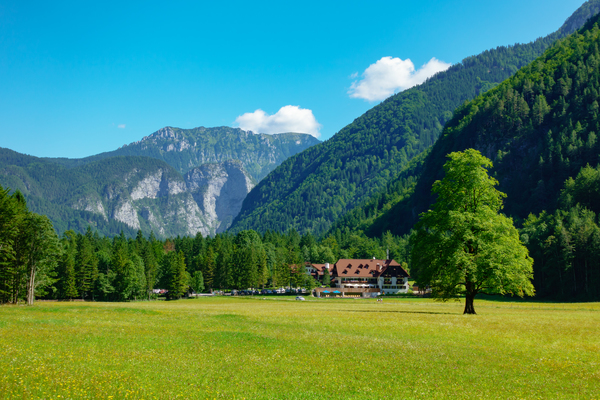

Known for its turquoise waters, this region offers water sports such as rafting, kayaking, and canyoning.
A charming coastal town with Venetian architecture, beaches, and opportunities for swimming, sailing, and diving.


An alpine plateau with traditional herders’ huts, offering hiking, mountain biking, and skiing in winter.
A popular destination for skiing, snowboarding, and other winter sports, as well as hiking and mountain biking in summer.


Perfect for fishing, particularly fly fishing, as well as rafting and kayaking.
Check out our indepth guide on all the natural wonders Slovenia has to offer.


Wander through the charming streets of Slovenia's capital, visit Ljubljana Castle, and enjoy the lively atmosphere along the Ljubljanica River.

Admire the stunning scenery, row to Bled Island, and explore Bled Castle, all set against the backdrop of the Julian Alps.
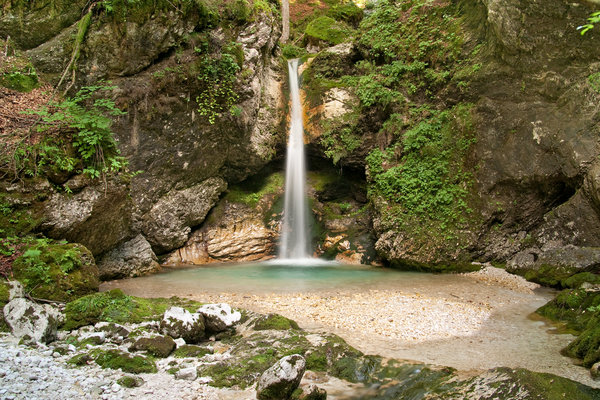
Hike or cycle through this pristine park, and if you're adventurous, climb Mount Triglav, the highest peak in Slovenia.

Venture into the depths of this impressive cave system, and visit the dramatic cliffside Predjama Castle nearby.

A UNESCO World Heritage site, this fascinating cave system is known for its enormous underground canyon.
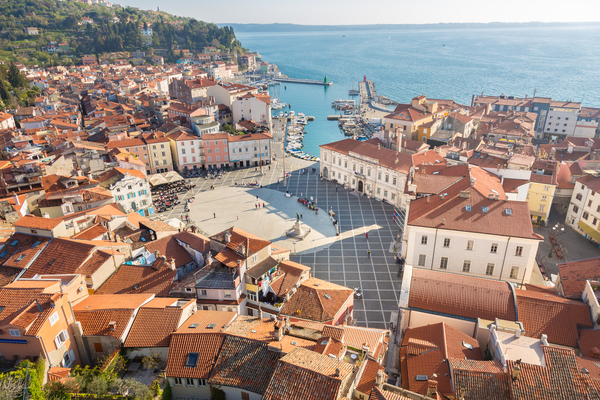
Stroll along the narrow streets of this picturesque coastal town, and enjoy the Venetian architecture and beautiful views of the Adriatic Sea.

Experience white-water rafting, kayaking, or canyoning in the stunning turquoise waters of the Soča River.

Sample local wines and enjoy the beautiful vineyard-covered landscapes of these famous wine-producing regions.

Explore Slovenia's oldest town, with its well-preserved medieval architecture, hilltop castle, and rich history.

Slovenia is home to numerous thermal spas and wellness resorts, such as Terme Čatež, Terme Olimia, or Terme Ptuj, where you can enjoy rejuvenating treatments and soak in mineral-rich waters.

Experience Slovenian culture firsthand by attending a traditional event or festival, such as the Ljubljana Dragon Carnival, Lent Festival, or Kurentovanje.


Perched on a hill overlooking the capital city, this medieval castle has a history dating back to the 11th century and offers stunning panoramic views of Ljubljana.

Overlooking Lake Bled, this medieval fortress houses a museum and offers breathtaking views of the lake and surrounding mountains.

Situated on a hill above the oldest town in Slovenia, Ptuj Castle houses a museum showcasing the history and culture of the region.

This unique cliffside castle is built into a cave, with a history spanning over 800 years, and is located near Postojna Cave.

This charming coastal town features Venetian Gothic architecture, narrow streets, and the beautiful St. George's Cathedral.

One of the best-preserved medieval towns in Slovenia, Škofja Loka boasts a 13th-century castle, a historic town square, and beautiful churches.

Perched on a hill above the city of Celje, this medieval fortress offers sweeping views and hosts various cultural events throughout the year.

Discover the remains of ancient Roman settlements in Ptuj and Emona, the latter being situated beneath present-day Ljubljana.

Located in Ljubljana, this museum houses a comprehensive collection of artifacts, including the 40,000-year-old Neanderthal flute and the world's oldest wooden wheel.
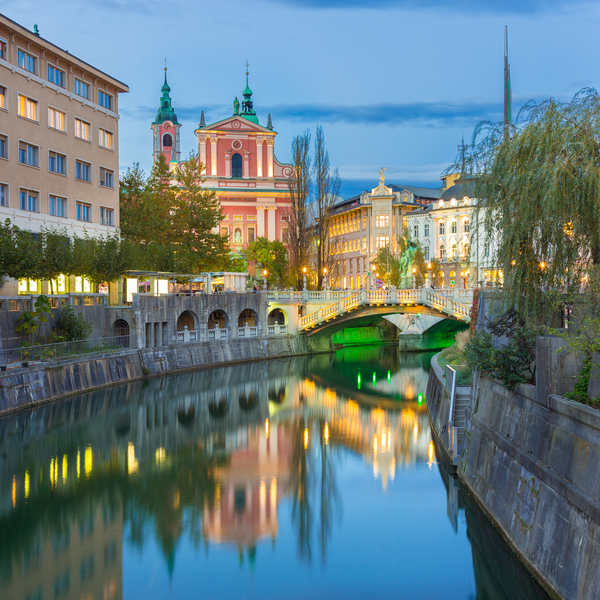
Explore the work of renowned Slovenian architect Jože Plečnik, who shaped the cityscape of Ljubljana with landmarks such as the Triple Bridge, the Central Market, and the National and University Library.
1. Ljubljana: The picturesque capital city features a blend of Baroque, Art Nouveau, and modern architecture, with a lively atmosphere, charming old town, and iconic Triple Bridge.
2. Maribor: Slovenia’s second-largest city, known for its vibrant wine culture, the oldest vine in the world, and a lively arts and culinary scene.
3. Koper: A historic port city with Venetian architecture, beautiful squares, and access to the Adriatic coast.
4. Celje: A city with a rich history, featuring the impressive Celje Castle, museums, and old town with well-preserved architecture.
5. Novo Mesto: A picturesque town set along the Krka River, offering beautiful landscapes, historic sites, and vineyards.
6. Ptuj: Slovenia’s oldest town, boasting a hilltop castle, medieval architecture, and significant Roman remains.
7. Piran: A charming coastal town on the Adriatic Sea with Venetian architecture, narrow streets, and beautiful views.
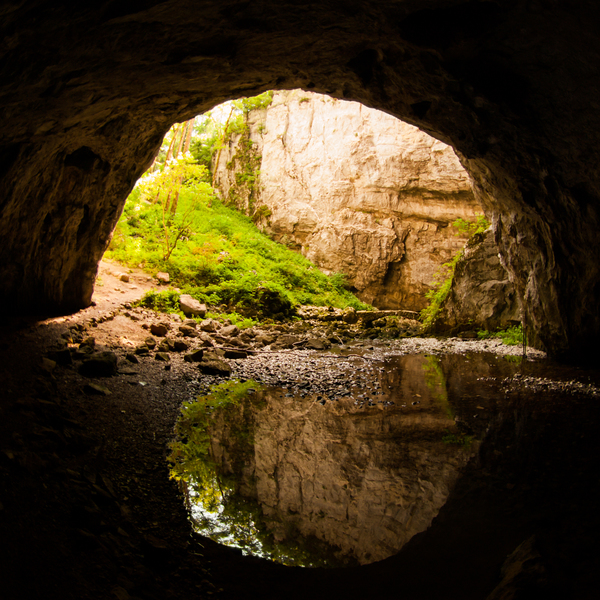
This remarkable underground karst cave system features one of the largest known underground canyons and boasts unique natural formations.

This site includes two locations in Slovenia (Ig and Ljubljana Marshes) and represents prehistoric settlements built on wooden piles in wetland areas.

This site represents the two largest mercury mines in the world, with Idrija in Slovenia showcasing its mining heritage, preserved miners' quarters, and handmade lace tradition.
Slovenia’s culinary scene is a blend of diverse regional influences, including Alpine, Mediterranean, Pannonian, and Balkan flavors. Traditional dishes feature locally sourced, seasonal ingredients and often incorporate elements of Italian, Austrian, Hungarian, and Croatian cuisines. Popular dishes include Kranjska klobasa (Carniolan sausage), Žlikrofi (dumplings), Potica (a rolled, filled pastry), and Prekmurska gibanica (layered cake). Slovenian wines are also highly regarded, with wine regions such as Goriška Brda and Vipava Valley producing excellent vintages. In recent years, Slovenia has seen a rise in innovative, modern cuisine, with several restaurants receiving Michelin stars and recognition for their fusion of traditional and contemporary flavors.
Slovenian cuisine is a delightful fusion of diverse culinary traditions, shaped by the country’s geographical position at the crossroads of the Alps, the Mediterranean, the Pannonian Plain, and the Balkans. Its culinary heritage is deeply rooted in local, seasonal ingredients and draws inspiration from neighboring countries like Italy, Austria, Hungary, and Croatia.
The rich variety of Slovenian dishes reflects regional differences, from hearty Alpine fare in the mountainous areas to the Mediterranean flavors of the coastal region. Traditional Slovenian food is characterized by the use of meats, dairy products, vegetables, fruits, and grains, combined in simple yet flavorful dishes.
Some well-known Slovenian dishes include Kranjska klobasa (Carniolan sausage), Jota (a thick soup made with sauerkraut, beans, and potatoes), Žlikrofi (potato dumplings), and Kremšnita (cream cake). The country is also renowned for its diverse selection of artisanal cheeses, cured meats, and honey.
Slovenia has a long tradition of winemaking, boasting numerous wine-producing regions such as Goriška Brda and Vipava Valley, where both indigenous and international grape varieties are cultivated. Slovenian wines are gaining recognition worldwide for their quality and unique character.
In recent years, the Slovenian culinary scene has experienced a renaissance, with innovative chefs combining traditional flavors with modern techniques, elevating local cuisine to new heights. This culinary evolution has put Slovenia on the map as an emerging gastronomic destination, attracting food lovers from around the world.
Slovenia boasts a variety of local delicacies and regional dishes that showcase its rich culinary heritage. Here are some notable examples.

A traditional Slovenian sausage made from pork and seasoned with garlic and pepper, often served with sauerkraut or potatoes.

Small, pasta-like dumplings filled with potato and onion, often served with meat or mushroom sauces, a specialty of the Idrija region.

A hearty soup made with sauerkraut, beans, potatoes, and smoked pork, commonly found in the Primorska region.
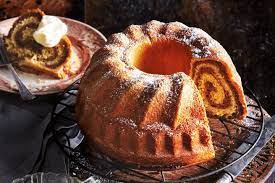
A rolled, filled pastry made with a variety of fillings, such as walnuts, poppy seeds, tarragon, or cottage cheese, popular throughout Slovenia.

A multilayered cake filled with poppy seeds, walnuts, apples, and cottage cheese, originating from the Prekmurje region.

A delicious cream cake made with layers of puff pastry, vanilla custard, and whipped cream, especially popular in Bled.

A savory strudel filled with cottage cheese and herbs, typical of the Bela Krajina region.

A hearty meat stew made with three types of meat, potatoes, and spices, inspired by Hungarian goulash and native to the Prekmurje region.

A thick barley and vegetable stew, often cooked with smoked meats, and enjoyed in many regions of Slovenia.

Potato-filled dumplings, similar to Italian tortellini, from the Idrija region, often served with a meat sauce.

Slovenian dry-cured ham, similar to Italian prosciutto or Spanish jamón, particularly renowned in the Karst region.

Slovenia has a strong beekeeping tradition, and its honey, particularly from the Carniola region, is highly prized for its quality and flavor.
These dishes and delicacies showcase Slovenia’s diverse culinary landscape, influenced by neighboring countries and regional traditions, providing visitors with a unique gastronomic experience.
Slovenian cuisine traditionally relies heavily on meats and dairy products, but in recent years, the country has seen a growing awareness and interest in vegetarian and vegan lifestyles. As a result, there are increasingly more vegetarian and vegan-friendly options available, particularly in larger cities like Ljubljana and Maribor.
1. Traditional dishes: Some Slovenian dishes are inherently vegetarian or can be easily adapted to suit a vegetarian or vegan diet. Examples include štruklji (boiled or baked dough rolls with various fillings), zelenjavni ričet (vegetable and barley stew), and ajdovi žganci (buckwheat spoonbread).
2. Fresh produce: Slovenia is known for its high-quality, locally-sourced fruits and vegetables, which can be enjoyed in seasonal salads, soups, and stews.
3. International cuisine: Slovenian cities are increasingly offering a variety of international cuisines, such as Italian, Asian, or Middle Eastern, which often have a range of vegetarian and vegan options.
4. Vegetarian and vegan restaurants: In major cities like Ljubljana and Maribor, you’ll find dedicated vegetarian or vegan restaurants, as well as mainstream restaurants offering clearly marked vegetarian and vegan dishes on their menus.
5. Grocery stores and markets: Health food stores, organic shops, and local farmers’ markets are excellent places to find fresh produce, plant-based products, and specialty items catering to vegetarian and vegan diets.
While traveling through Slovenia as a vegetarian or vegan might require some extra planning and research, the growing awareness of plant-based diets and the availability of vegetarian and vegan options make it increasingly easier to enjoy the country’s culinary scene without compromising on dietary preferences.
Slovenia is known for its high-quality drinking water, which is sourced from natural springs and underground reservoirs. Tap water in Slovenia is safe to drink and meets high European Union standards for quality and safety. In fact, the water quality in Slovenia is among the best in Europe, and locals often take pride in their country’s clean and pure water resources.
Throughout the country, you will find public water fountains and taps where you can fill up your bottle with fresh, potable water for free. This is particularly common in urban areas like Ljubljana, where numerous drinking fountains are scattered across the city.
When visiting Slovenia, you can confidently drink tap water without any concerns. However, if you have a sensitive stomach or prefer bottled water, you can easily find it in supermarkets, convenience stores, and cafes. Keep in mind that choosing tap water is not only safe but also a more environmentally friendly option.
Tipping in Slovenia is not as strictly observed as in some other countries, but it is still appreciated when you receive good service. Here are some general guidelines for tipping in Slovenia:
1. Restaurants: In sit-down restaurants, it is customary to tip between 10% and 15% of the total bill if you are satisfied with the service. You can either round up the bill to the nearest euro or leave the tip on the table when you leave.
2. Cafes and bars: At cafes and bars, tipping is not as common, but you can still round up the bill or leave some small change if you receive good service.
3. Taxis: For taxi drivers, it is typical to round up the fare to the nearest euro or leave a small tip of around 10% if you are happy with the service.
4. Hotel staff: For hotel staff, such as bellboys and housekeeping, you can tip a few euros for their service, but it is not obligatory.
5. Tour guides: If you take a guided tour, tipping the guide around 10% of the tour cost is a nice gesture if you enjoyed the experience.
6. Spa and beauty treatments: For spa and beauty services, a 10-15% tip is appreciated if you are satisfied with the service.
Remember that tipping is not mandatory in Slovenia and should be done at your discretion, based on the quality of the service you receive. If you are unsure about whether to tip or how much to give, observing local customs or asking locals for advice can be helpful.
Networking and socializing in Slovenia can be a rewarding experience, as Slovenians are generally friendly, hospitable, and open to meeting new people. Here are some tips to help you network and socialize in Slovenia:
1. Language: While many Slovenians, especially younger people, speak English fluently, learning a few basic phrases in Slovenian can go a long way in breaking the ice and making a good impression. Slovenians appreciate when foreigners make an effort to speak their language, even if it’s just a simple “Dober dan” (Good day) or “Hvala” (Thank you).
2. Cultural events and festivals: Attending cultural events, art exhibitions, music concerts, or local festivals is an excellent way to meet new people and immerse yourself in Slovenian culture. These events often attract a diverse crowd and provide an opportunity for socializing and networking.
3. Sports and outdoor activities: Slovenians are known for their love of sports and outdoor activities. Joining a local sports club, participating in group hikes, or engaging in other outdoor pursuits can help you connect with like-minded individuals.
4. Meetup groups and expat communities: Joining local meetup groups or expat communities is a great way to meet people who share your interests or are also new to Slovenia. These groups often organize social events, language exchange meetups, and networking opportunities.
5. Co-working spaces: If you’re a digital nomad or entrepreneur, working from a co-working space can provide an opportunity to network with professionals and other freelancers. Many co-working spaces also host events and workshops that facilitate networking and collaboration.
6. Slovenian etiquette: When socializing with Slovenians, it’s essential to be polite and respectful. Shake hands when greeting people, maintain eye contact, and use appropriate titles (Mr., Mrs.) unless you are invited to use first names. Being punctual and showing respect for people’s time is also crucial.
7. Cafes and bars: Slovenians enjoy spending time in cafes and bars, which often serve as social hubs. Visiting local cafes and bars is an excellent way to meet people, strike up conversations, and build connections.
By engaging in these activities and being open to meeting new people, you can build a social and professional network while enjoying your time in Slovenia.
Meetup groups and expat communities can be an excellent way to connect with like-minded individuals, make new friends, and share experiences while living in Slovenia. Here are some resources and communities to help you find and join groups of interest:
1. Meetup.com: This popular website hosts a variety of meetup groups in Slovenia, focusing on different interests and activities. You can find groups related to language exchange, outdoor activities, professional networking, tech, and more. Visit the website (www.meetup.com) and search for groups in your area.
2. Internations: Internations is a global expat network that organizes events and activities for expats and locals in cities around the world, including Ljubljana. You can join the community and find information about upcoming events on their website (www.internations.org).
3. Facebook Groups: Numerous expat and international groups are active on Facebook, covering various topics and interests, such as living in Slovenia, job opportunities, and social events. Some popular groups include “Expats in Slovenia,” “Ljubljana Expats,” and “Foreigners in Slovenia.”
4. Couchsurfing: Couchsurfing is not only a platform for finding accommodation but also a community that organizes social events and meetups for travelers and locals. Check the website (www.couchsurfing.com) for events happening in your area.
5. Language exchange groups: If you’re interested in learning Slovenian or practicing other languages, you can join language exchange groups, which often organize regular meetups and events. Websites like Tandem and ConversationExchange can help you find language partners or groups in Slovenia.
6. Local clubs and organizations: Participating in local sports clubs, cultural associations, or hobby groups can also help you connect with both locals and expats. Check local bulletin boards, community centers, or online forums for information about clubs and organizations in your area.
Slovenia hosts a variety of cultural events and festivals throughout the year, celebrating its rich history, arts, music, and traditions. These events provide an excellent opportunity to experience Slovenian culture and connect with locals. Some notable cultural events and festivals in Slovenia include:
1. Ljubljana International Film Festival (LIFFe): Held annually in November, LIFFe showcases a diverse selection of films from around the world, attracting film enthusiasts, industry professionals, and international guests.
2. Lent Festival: Taking place in Maribor in late June and early July, this is one of Slovenia’s largest and most popular festivals. It features music, dance, theatre, and other performances, with over 400 events taking place in various locations throughout the city.
3. Kurentovanje: A traditional Slovenian carnival held in Ptuj, the country’s oldest town, in February. The festival is famous for its unique folkloric character, the Kurent, which is said to chase away winter and usher in spring.
4. Ljubljana Summer Festival: This festival occurs between June and September, featuring a diverse program of classical music, theatre, dance, and visual arts performances in various outdoor venues across Ljubljana.
5. Ana Desetnica International Street Theatre Festival: Held in early July, this festival brings together street performers, puppeteers, and artists from around the world to entertain audiences in the streets of Ljubljana and other Slovenian towns.
6. Pippi Longstocking Festival: An annual children’s festival held in Velenje in May, featuring theatre performances, workshops, and activities for children and families.
7. Trnfest: A free summer festival held in Ljubljana in August, featuring a diverse program of music, theatre, film, and visual arts, with a focus on alternative and experimental productions.
8. Jazz Festival Ljubljana: Taking place in June, this is one of the oldest jazz festivals in Europe, attracting renowned international jazz musicians and enthusiasts to Ljubljana.
9. Festival of Slovenian Film: Held annually in September, this festival showcases the latest achievements in Slovenian cinema, including feature films, documentaries, short films, and animated films.
10. Medieval Days in Bled: A historical reenactment event held in June, celebrating Bled’s rich medieval history with knights, craftsmen, and entertainers, creating an authentic medieval atmosphere.
Slovenia offers various nightlife and entertainment options, with its vibrant cities, lively bars, clubs, and cultural events. The larger cities, such as Ljubljana and Maribor, have more diverse nightlife scenes, but you can still find entertainment options in smaller towns. Here are some popular nightlife and entertainment options in Slovenia:
1. Ljubljana: As the capital city, Ljubljana has the most diverse nightlife scene in the country. You can find a range of bars, pubs, clubs, and live music venues to suit different tastes. Popular areas for nightlife include the riverside promenade, Metelkova, and Trubarjeva cesta.
2. Maribor: The second-largest city in Slovenia, Maribor has a growing nightlife scene, with various bars, clubs, and music venues. The city center around Lent and the pedestrianized street, Poštna ulica, are popular nightlife spots.
3. Kranj: Kranj, known for its picturesque old town, offers a more laid-back nightlife experience, with cozy bars, pubs, and cafes. The city also hosts various cultural events, such as concerts and theater performances.
4. Coastal towns (Piran, Portorož, and Koper): The Slovenian coast is known for its charming towns and picturesque beaches. The nightlife here is more relaxed, with seaside bars, restaurants, and the occasional club. The coastal towns also host various cultural events and festivals throughout the year.
5. Lake Bled: While Lake Bled is primarily a daytime destination, there are a few bars and restaurants in the area for a relaxed evening. The town of Bled also hosts occasional cultural events, such as concerts and festivals.
6. Casinos: Slovenia has several casinos, mainly in tourist areas like Portorož, Bled, and Kranjska Gora. These venues offer a range of gaming options and often feature live entertainment.
7. Cultural events and festivals: Throughout the year, Slovenia hosts numerous cultural events, such as music, film, and theater festivals, which provide entertainment options for locals and visitors alike.
8. Wine tasting: Slovenian wine regions, such as Goriška Brda, Vipava Valley, and the Drava Valley, offer wine tasting experiences in local wineries, which can be an enjoyable way to spend an evening.
While Slovenia’s nightlife might not be as extensive as in some larger European cities, there are still plenty of options for an enjoyable night out, from lively bars and clubs to cultural events and picturesque locations for a relaxed evening.
Slovenia is generally a safe country with low crime rates and a stable political environment. Visitors can feel secure while exploring the country, even at night. However, it is always advisable to take standard precautions, such as safeguarding personal belongings and being aware of your surroundings. Healthcare in Slovenia is of high quality, with well-equipped hospitals and medical facilities. The country has a comprehensive public healthcare system, and EU citizens can access emergency medical care using their European Health Insurance Card (EHIC). Non-EU citizens should have valid travel insurance with medical coverage. In case of emergencies, dial 112 for assistance.
For digital nomads, accessibility to healthcare in Slovenia will depend on their country of origin and the type of insurance they have:
For digital nomads planning to stay in Slovenia for an extended period, it might be worthwhile to consider purchasing private health insurance, which can provide more comprehensive coverage and access to private healthcare facilities. Additionally, most major cities in Slovenia have English-speaking doctors and medical staff, but it is a good idea to know some basic Slovenian phrases related to healthcare for easier communication in case of emergencies.
Slovenia, as an EU member state, follows the Schengen Area rules for visas and residency. EU, EEA, and Swiss citizens do not need a visa to enter Slovenia for short stays (up to 90 days in a 180-day period). For non-EU nationals, a Schengen visa may be required for short stays, depending on their country of origin. Long-term stays (over 90 days) usually require a national visa or residence permit, which can be granted for various purposes such as work, study, family reunification, or self-employment. It is crucial to check the specific visa and residency requirements for your nationality and purpose of stay before traveling to Slovenia.
Slovenia does not have a specific visa category for digital nomads, but there are several long-term visa options that could potentially suit digital nomads looking to stay in the country for an extended period:
To apply for any of these long-term visas, you must submit the required documentation, including a valid passport, proof of sufficient financial means, and evidence of health insurance coverage, among other requirements. It is important to note that the application process can be complex and may vary depending on your specific situation and nationality.
Before applying, consult the Slovenian consulate or embassy in your country or visit the official government website for up-to-date information on long-term visa options and requirements. It’s crucial to research and understand the eligibility criteria, required documentation, and application procedures for the visa option that best suits your needs.
The application process and required documentation for visas or residence permits in Slovenia vary depending on the type of visa or permit and your nationality. Below is a general overview of the application process and some common documents required for different types of visas or residence permits:
These are general guidelines, and the exact requirements may vary depending on your nationality and the specific visa or permit you are applying for. Always consult the Slovenian consulate or embassy in your country or visit the official government website for the most up-to-date information on application procedures and required documentation.
The best time to visit Slovenia depends on your preferences and the activities you plan to enjoy during your stay. Slovenia experiences four distinct seasons, each offering different attractions and experiences:
Getting to Slovenia can be done through various modes of transportation, depending on your point of origin and preferences. Here are some common ways to reach Slovenia:
Driving in Slovenia is a great way to explore the country at your own pace and visit off-the-beaten-path locations. Here are some important tips and guidelines to follow when driving in Slovenia:
Public transport in Slovenia is reliable, affordable, and well-developed, providing a convenient way to explore the country. The main modes of public transport in Slovenia include trains, buses, and city transportation.
There are several local apps in Slovenia that can be helpful for travelers and residents alike. These apps can help you navigate transportation, find attractions, and explore local culture. Some popular local apps include:
Slovenia is an increasingly popular destination for digital nomads and travelers, thanks to its stunning natural beauty, vibrant culture, and excellent quality of life. Its picturesque landscapes, including the Julian Alps, Triglav National Park, Lake Bled, and the charming coastline, offer numerous outdoor activities and unforgettable experiences. The capital, Ljubljana, is a lively city with a well-preserved historic center, an abundance of green spaces, and a thriving cafe culture.
Slovenia boasts a high level of English proficiency, making communication easy for most visitors. The country offers a range of accommodation options, from budget-friendly hostels to luxury hotels, and the cost of living is relatively affordable compared to other European destinations. The public transport system is reliable and extensive, while the compact size of the country allows for convenient exploration. With excellent internet connectivity and a growing number of co-working spaces, Slovenia is an attractive choice for digital nomads seeking a unique and inspiring work-life balance.
Check out our other nomad guides for other balkan destinations:
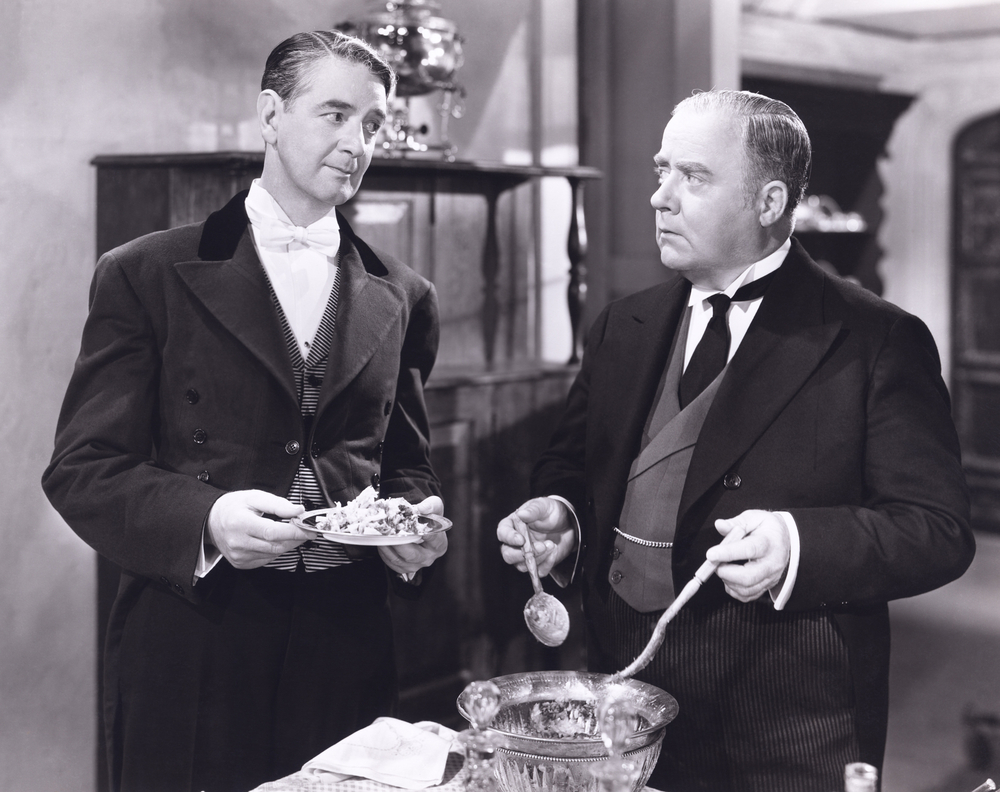
Avid travelers, passionate fishermen, and all-around great guys to hang out with (therefore the reason why they are the ones traveling around and not the rest of us, introverts and repulsive individuals). When not writing about their latest trip or catch, they drink beer, play the synth and call their friends to unpurposefully annoy them. A lot.